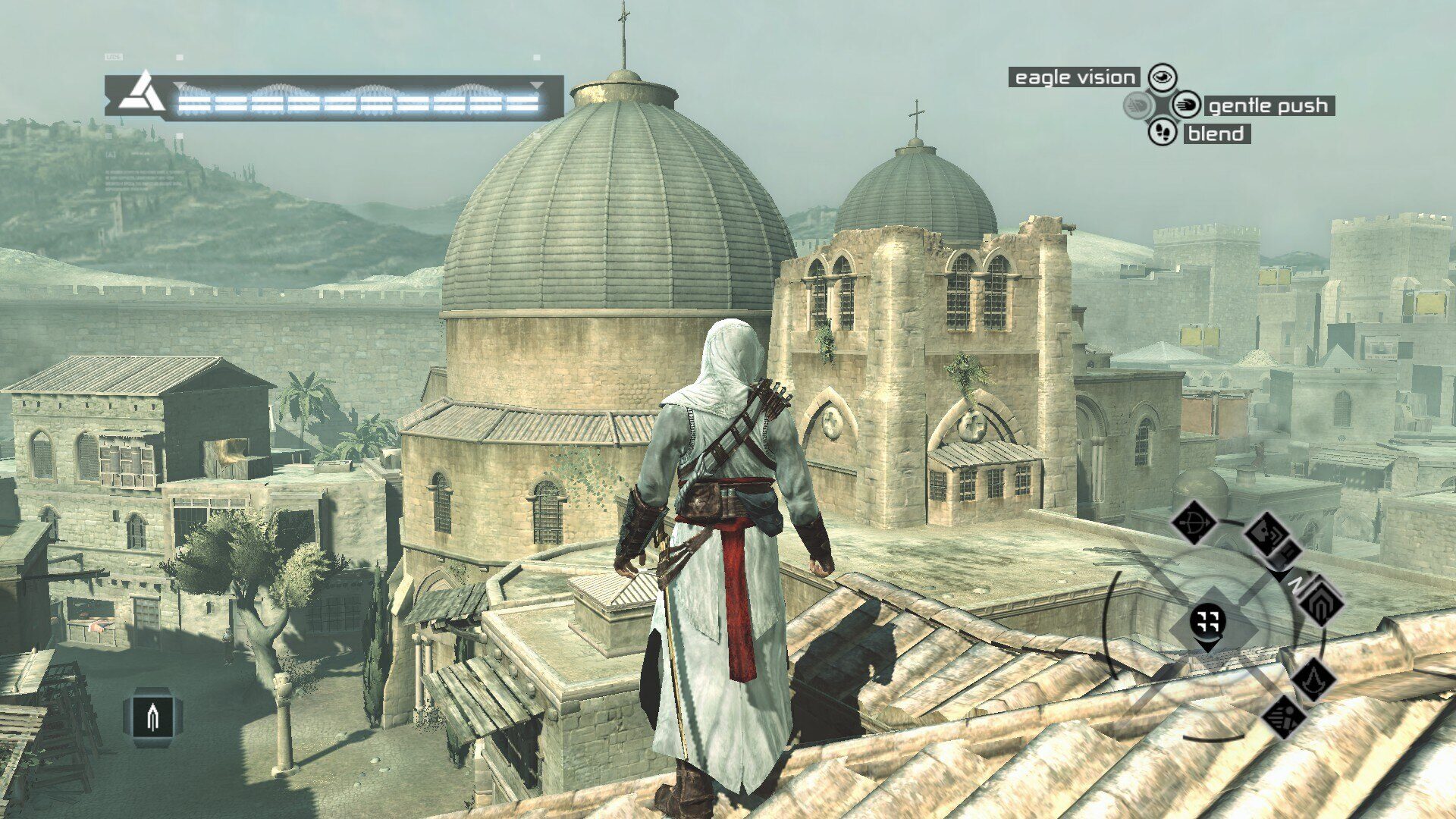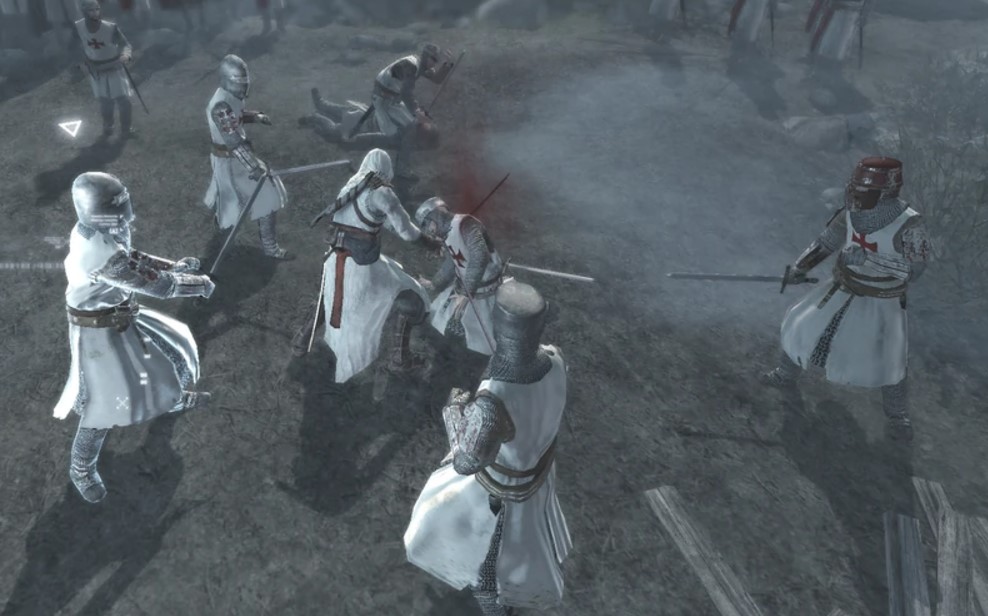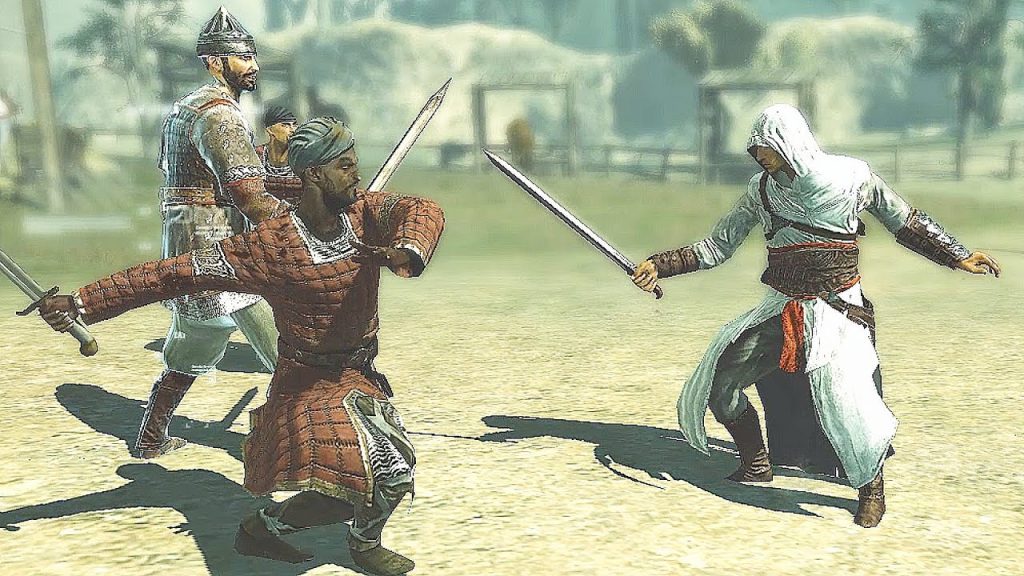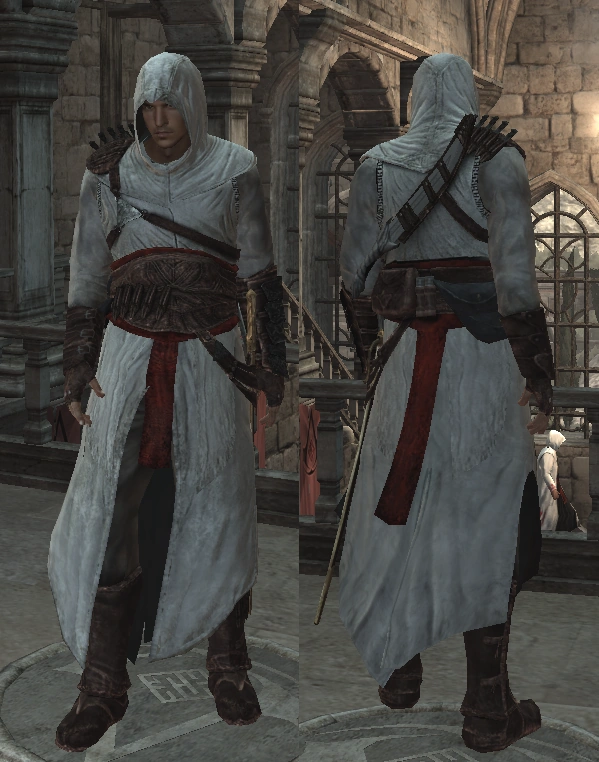Assassin’s Creed – Art Direction Analysis
Assassin’s Creed is a popular gaming franchise developed by Ubisoft. They are third person action adventure games that take place in iconic historical settings such as the crusades and the renaissance.
I recently replayed the first Assassin’s Creed game due to two reason: firstly, nostalgia and interest as to how much it held up. But secondly, and more importantly, the setting. The first game takes place in the levant and middle east during the crusades which makes it a useful game to take inspiration from due to the fact that my game takes heavy inspiration from this region and time period. In playing this game I found several things that piqued my interest, most notably, the art direction.
Art Direction
Locales
Assassin’s Creed goes for a realistic art style. It attempts to have graphical fidelity and tries to emulate real life. However, I would like to analyze the art direction in regards to the designs of the characters, enemies, and locations. The first aspect I will discuss is the locations. Each location is distinct in its architecture and its colour palette. Three of the main cities in the game such as Acre, Jerusalem, and Damascus have their own unique architecture and colour palette as seen below:

Acre is the crusaders’ stronghold. As such, it has architecture heavily influenced by European Christian architecture with gothic styled churches and mediaeval European styled fortresses and houses. The colour palette has a blue-grey filter that sets it apart from other locations and reinforces the European aesthetic as it appears to be overcast much like many European nations. These aspects are not necessarily historically accurate, but they serve to make Acre a unique city.

Jerusalem is occupied by the Saracens at this point. It has a green-brown aesthetic and is based on the real life city. As such it is less “creative” as the modern city is very similar to its appearance in the middle ages. Its populated by smaller buildings as well as religious sites such as mosques, churches, and synagogues. Its aesthetic blends several differing aesthetics together to create a unique city.

Damascus is city of the Saracens. It is heavily influenced by the Islamic architectural styles. The city is populated by mosques, markets, and smaller houses. It has a very much Arab/Middle Eastern appearance which is accentuated by the orange-yellow filter that reinforces the region’s climate and thus the status of the city being under Saracen rule.
All these different aesthetics and colour palettes work to make each location distinct from one another and allows the player to feel the differences between the cities’ cultures and allegiances just at a glance. For my game I want each location to have a distinct feeling like how each city has its own distinct feeling in Assassin’s Creed. The most effective ways of doing so are the methods I have discussed, essentially the unique colour palettes and architectural designs.
Character Designs
Assassin’s Creed also aims to have realism in regards to the character designs, with enough fantastical elements to add a unique aesthetic to the game, namely with the assassins’ uniform. The designs of the Saracens and the Crusaders have a more realistic appearance on the other hand.

The crusader knights are very much steeped in reality in how they are dressed. It’s clear that the artists took inspiration from different crusader factions throughout history as one can see due to the helmet differences between each crusader, however it serves to highlight how crusaders came from all over Europe with some sporting German helmets and other sporting English ones. The difference in helmet and robe designs also allows the player to distinguish the enemies from each other. This allows one to tell the difference between an enemy they have wounded as well as the difficulty of each enemy, as the more armoured an enemy is, the more powerful they are.

The Saracens sport less armour than their crusader counterparts which makes some sense historically as they typically wore lighter armour than crusaders. The Saracens are easier to distinguish due to the much more apparent differences amongst each other as some Saracens wear only leather clothing while others are equipped with metal scale armour. The designs are somewhat accurate to reality and do a sufficient job at distinguishing them. Although their designs do not particularly stand-out to me personally.

The design of Altair, and the assassins as a whole, are primarily fictional and not based on much, if any, real-world historical clothing. The assassins that the characters in Assassins Creed are based on were far different in reality and did not sport white robes or hoods. In spite of this, the design still fits within the setting of the game and appears as something that may be plausible in reality. The combination of white, red, and brown complement each other very well. The flowing robes combine effectively with the hood as well, making a design that leaves a strong impression on the player. It is personally one of my favourite character designs in all of video games.
Each design is distinct from one another all while maintaining a cohesive aesthetic, that, while not wholly historically accurate, at least appears to be historically plausible. The distinction between each design allows the player to easily differentiate the factions at a glance and offers an interesting range of designs to gaze upon. For my game, I would like to incorporate designs from history, as well as my own creative ideas, similar to what is seen in Assassin’s Creed. Blending real historical outfits and designs with fantastical original ideas would lend itself well for my game.
Conclusion
Overall Assassin’s Creed served as a good game to analyze in regards to its art direction. Its usage of fictional designs combined with real world designs allowed for a cohesive and immersive experience. This type of approach to historical fiction aesthetics is the type of approach I may utilize, or at least take inspiration from in regards to my own game’s aesthetics and designs.

